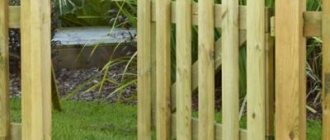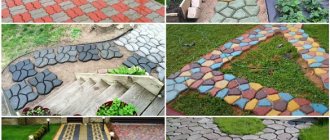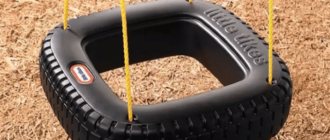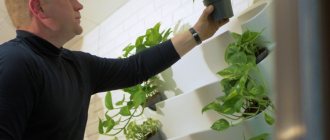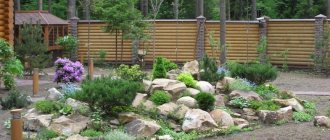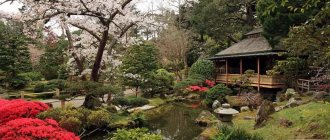Share
Beautiful arrangements of succulents can become a living decoration for your home or a lovely gift. Making such compositions is quite simple: you need a box, agrofilm, mesh and the succulents themselves.
You can combine succulents with plants from the bromeliad family, which require little to no soil to grow. They create greater volume and splendor of the overall composition of succulents.
Beautiful compositions with succulents are also obtained in combination with stone.
In addition, you are in no way limited by the shape of the container and can use any container that you have on hand, as well as wooden containers specially created for your project.
Compositions of succulents in glass (Florarium)
Beautiful compositions of succulents in a mini aquarium, in other words – Florariums, are very popular in decorating home interiors.
To create such a decorative element you need to take:
- glass container;
- drainage (crumbs, pebbles, sand, brick, activated carbon);
- soil mixture;
- elongated tweezers, wooden sticks;
- water;
- spray bottle, syringe;
- decorative items - figurines, colored sand.
When choosing soil, keep in mind that a composition with a minimum amount of organic matter, loose and light, is suitable. Peat should not be added as it makes the mixture heavier. Soil creation options:
- leaf soil with sand and vermiculite - 2 to 2 to 1;
- garden soil, washed sand, coal, baking powder – 50% + 30% + 10%;
- purchased soil supplemented with baking powder.
When the ground is ready, you have to choose the plants. To fill florariums, both leafy representatives of succulents and spherical, stem-shaped ones are suitable.
The most popular are:
- Stone rose Echeveria;
- Striped and Lemon-leaved Haworthia;
- Lithops;
- Godson Rowley;
- Spurge;
- Miniature Aloe;
- Echinopsis;
- Astrophytums;
- Prickly pears (low growing ones only).
Other types of succulents will also work, as long as they are miniature.
Checking in the florarium
To make it as easy as possible for you to complete all the steps yourself, let’s consider the algorithm for carrying out the procedure:
- Mix gravel with coal and sand. We lay a layer of drainage (2-3 centimeters) on the bottom. Spread the soil mixture in a layer of 5-7 centimeters, tamp it down and level it.
- We remove the plants from the pots, and slightly rub off the edges of the soil. A hole is prepared with tweezers or wooden sticks, then the plant is carefully placed there.
- The roots are covered with earth, the root collar remains open, then the surface is compacted. Next, the top layer of drainage is laid. For this, pebbles, sand, and vermiculite are suitable.
- Watering indoor succulent arrangements is allowed only after 3-5 days from the moment of moving in. This is a mandatory rule that must be followed.
The final stage is decoration. Pine cones, dried flowers, shells, and interesting figures are suitable for decoration.
Important! It is better to maintain a distance of 3 centimeters between plants. This will allow you not to worry about water getting on the surface of the crops. Further care of the aquarium consists of keeping the soil moist and providing sufficient sunlight.
Live moss
Live moss looks best on light-colored walls. Living moss removes from the air
ammonia, acetaldehyde and acetic acid. Having a few moss decorations throughout your home will eliminate unpleasant odors, purify the air and reduce hearing levels. It can be not only green, but also yellow, brown and even red and purple. For decoration, you can use both live and artificial moss.
DIY interior decoration ideas with living moss:
How to make a phyto-picture from moss with your own hands
You will need:
- a new or used photo frame (with a flat, hard back);
- preserved moss;
- preserved moss clumps;
- picture hanging kit;
- plywood;
- saw (hand saw, table saw, circular saw - it doesn’t matter);
- construction adhesive;
- sand paper;
- glue gun and glue;
- electric stapler;
- quick-drying silicone (optional);
- paint (optional);
- plants with aerial roots, such as tillandsia;
- pliers.
How to do:
We choose plants depending on the amount of sunlight in the room
Many people dream of having a wall of living plants or paintings of plants in their home with their own hands. But when choosing flowers and plants to decorate your interior, it is important to remember that they all require different amounts of light.
the room is illuminated by direct sunlight most of the time
- cacti, succulents, agaves;
- ornamental grasses;
- Agapanthus (Blue African Lily);
- bougainvillea;
- coleus;
- jasmine;
- passionflower;
- vegetables and fruits.
If there is not much direct sun, then the following will do:
- Beloperone;
- chlorophyte;
- chrysanthemum;
- cordiline;
- compartment;
- ficus;
- hoya;
- poinsettia.
Bright but indirect sunlight for flowers:
- anthurium (flamingo flower);
- fern;
- azalea;
- Begonia Rex;
- chlorophyte;
- cyclamen;
- fuchsia;
- Philodendron scandens;
- spathiphyllum.
If the room is usually in partial shade:
- aglaonema;
- aspidistra;
- Dracaena marginata;
- ferns;
- fittonia;
- hedera helix;
- Philodendron scandens;
- Sansevieria.
In a room where sunlight does not penetrate, you can use:
- aglaonema;
- asplenium;
- aspidistra;
- fittonia;
- Philodendron scandens.
0
( 20 ratings, average: 4.50 out of 5)
Back
How to make a house from containers
MORE
How to plant succulents for panels?
- Choose mature but short plants so that they do not overwhelm the root part, break or fall out.
- Provide a layout plan in advance. We first plant hanging, ampelous varieties at the bottom of the box so that their foliage descends beautifully. And we place the larger ones on top. Don't worry about small voids, because the plants will grow and gradually take up all this space.
- It is advisable to water potted succulents before replanting to make them easy to remove. Carefully remove the plant with near-root soil from the cup. It is more convenient to do this in a basin, because it is not difficult to dirty the work area during such manipulations.
- Some plants may have a powerful root system. Estimate what size holes are needed for planting. In selected places on the non-woven material, make cross cuts and place the roots inside.
- Leave the finished panel horizontally for 2 weeks, and the plants will take root. If you immediately place the product on the side of a box or hang it vertically, they may fall out.
Photo: Transplanting succulents into a box
How to create a composition of succulents using scrap materials?
If you don’t want to buy special pots or glass containers to form exquisite combinations, you can use improvised means. We've put together a few ideas that you can easily recreate yourself:
Compositions of succulents in glasses
Instead of glasses, you can use any glass container.
Take old and unwanted containers, fill them with drainage and soil, and then place small exotics in them.
Planting in wooden products
If there are old wooden stumps or logs that require decoration, then fill them with soil and also plant exotic representatives there.
Alternate the color and shape of plants.
Compositions of succulents and seashells
Surely, each of you put shells to hear the sounds of the sea wave.
In this case, these holiday memories can be turned into beautiful decor. Take shells, place a suitable substrate there, and plant succulent crops.

